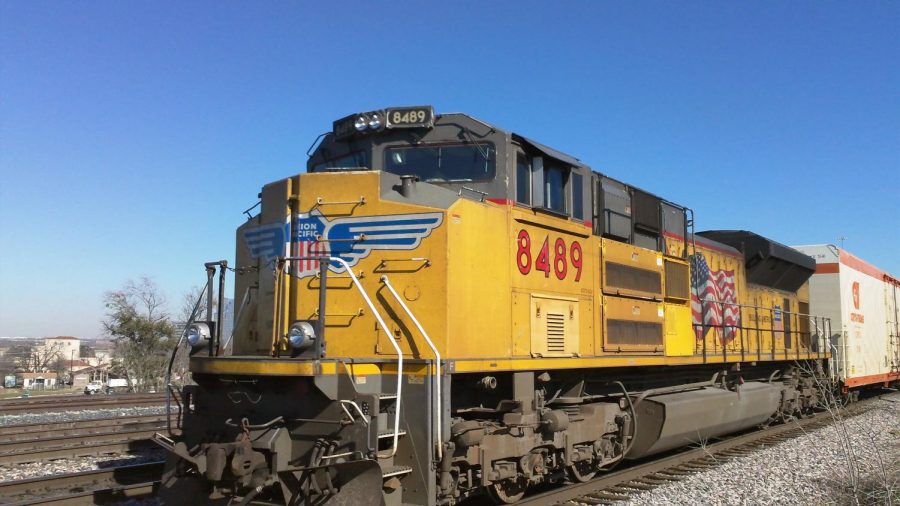Economic concerns over railroad workers’ strike put on hold
September 17, 2022
A deal between freight railroad companies and its employees was reached on Sept. 15, just a day before workers intended to go on strike.
Reaching a tentative agreement, the railroads’ deliberations with leaders from engineer and conductor unions have delayed a strike. However, nothing is for certain until the rank-and-file union members ratify the agreement by vote.
The strike stemmed from a contract dispute between 90,000 members of railroad unions and the railroad companies represented by the Association of American Railroads trade group. It was estimated that 30% of freight transportation would have been halted due to the strike, as reported by CNN using data from the Bureau of Transportation Statistics.
Additionally, it was estimated that the U.S. economy would lose $2 billion per day if the strike happened.
Union leaders originally voiced preferences for an agreement that addressed poor working conditions, some expressing discontentment with current contract terms.
However, the union claimed some major achievements from the deal including wage increases of 14% to 24% over the next five years, annual lump sum bonuses of $5,000 and guaranteed time away for medical visits.
The railroad workers argued that they were overworked. Under current contracts, two workers, a conductor and an engineer must be on duty throughout the entire week to make up a train crew. Workers are pushing for one-person crews to allow for more personal time.
Additionally, workers said they were burdened by heavy workloads as a result of reduced staff. The Associated Press reported that since 2017, over 22% of jobs with Union Pacific Corp., CSX Corp. and Norfolk Southern Corp have been cut, all major freight railroad companies.
Although other means of transporting goods are available, those methods such as trucks and boats have been hindered by coronavirus-related delays and rising shipping costs.
“As we experienced with the ports, delays mounted quickly and it is now taking weeks to unwind,” Alan Baer, the CEO of transportation services company OL-USA, told CNBC. “Domestic trucking rates would surge as capacity disappears. Overall, a nightmare scenario.”
Additionally, freight trains account for 40% of transportation of goods in the United States, according to the Bureau of Transportation Statistics. Agriculture, construction and energy are some of the industries that rely on freight trains for transportation, according to AAR.
“The railroads are actually very critical to the nation’s economy, and also to security,” Nicholas Little, the managing director of the Railway Management Program at Michigan State University, told The Hill. “There’s a lot of hazardous stuff that simply can’t go by road.”
Federal offices worked to avoid a strike. U.S. President Joe Biden initially imposed a 30-day cooling-off period for negotiations. The period was set to expire on Sept. 16.
Five unions, which all together represent 21,000 workers, reached agreements after working with a board of arbitrators that was appointed by Biden. Offers included an immediate 14% wage raise and annual $1,000 bonuses through a five-year period.
However, concerns were raised leading up to the deadline when seven unions disagreed with the proposed labor deals, pushing for working conditions to be addressed in further talks. The unions also called on Congress not to interfere, saying striking is the only effective way to get demands met.
“Quite frankly, it’s not a good sign if it ultimately goes to Congress,” an unnamed business official who is monitoring the situation told CNN. “You don’t know what you’re going to get. You could have members that could hold up legislation to demand one thing or the other…Once Congress gets involved, it’s a mess.”
While workers were holding out for better offers, concerns were raised about how a railroad strike would affect the transportation of goods. The supply chain is already troubled.
“Our nation’s retailers continue to meet strong consumer demand despite continued supply chain challenges,” Jonathan Gold, the vice president of supply chain and customs policy for the National Retail Federation, said in a statement. “The goods and services tied to retailers are a key part of needed economic growth — despite various economic headwinds — and they require continued improvements and fluidity in the supply chain.”
Also at risk was the income of the railroad companies. Union Pacific Corp. reported a net income of $1.8 billion in its second quarter this year, but no contract agreements and less service may have resulted in a decline and negatively affected stockholders.
Biden played a role in negotiating the terms of the agreement, taking credit for the aversion of major stoppages in the supply chain.
“This is a big win for America,” Biden said in an address. “Together we reached an agreement that will keep our critical rail system working and avoid disruptions of our economy.”
Details of the pending vote remain unclear as some unions finalize their interpretation and response to the terms. Developments will continue to unfold in coming weeks.









